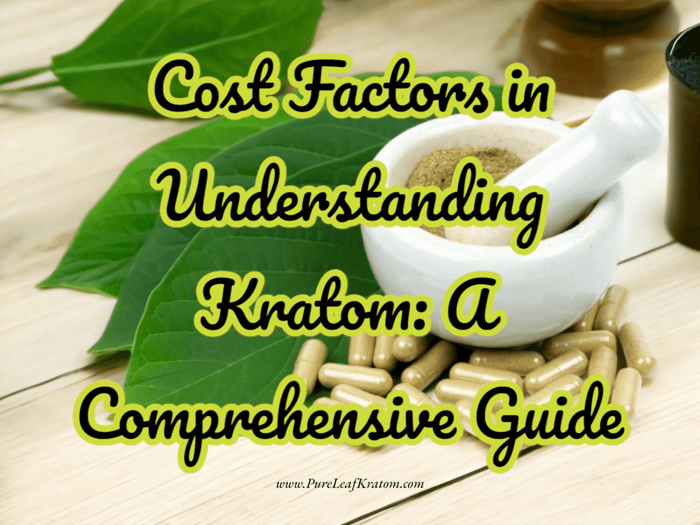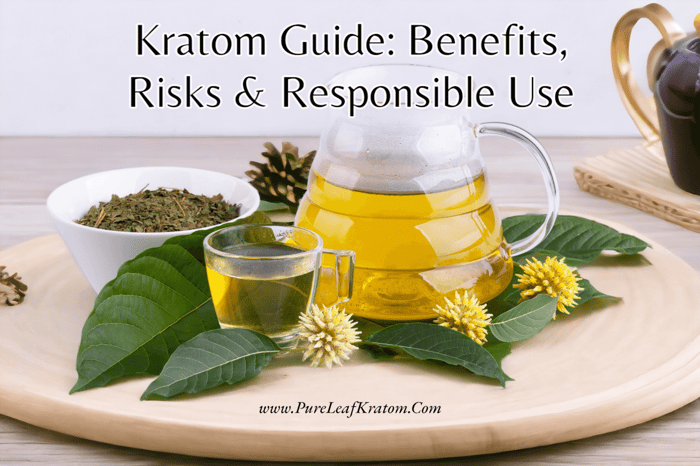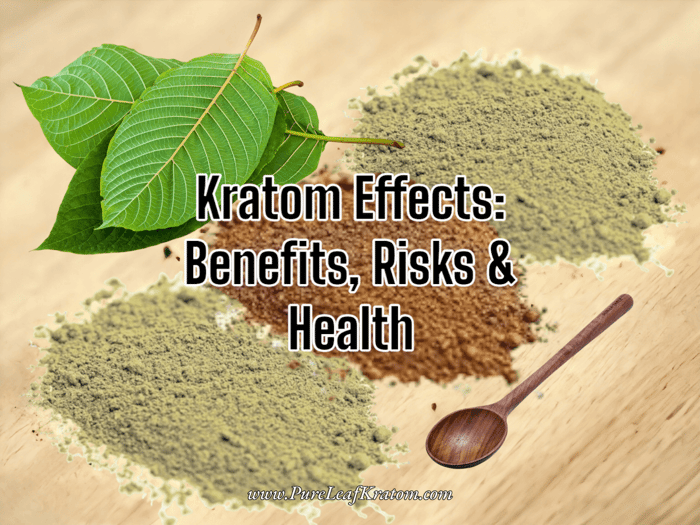
Kratom & You: Understanding the Mixed Bag of Outcomes
Understanding Kratom: An In-depth Introduction
Derived from the leaves of the Mitragyna Speciosa tree native to Southeast Asia, Kratom is a complex and interesting substance. For centuries, it has been utilized in traditional medicines and practices in countries such as Thailand, Malaysia, and Indonesia.
Unravelling the Origin and History
It was primarily used by manual laborers in Southeast Asia to combat fatigue and improve productivity. As a relaxation aid in social and religious rituals, the local populace also recognized its euphoric and mood-lifting effects.
Exploring Traditional Medicines and Practices
Due to its analgesic effects, It was traditionally used to relieve pain. It's also been seen as a potent remedy for conditions such as diarrhea and cough. The leaves were often chewed fresh, but drying and powdering allowed for easy distribution and consumption across the region and beyond.
Dissecting the Core Composition: Mitragynine and 7-Hydroxymitragynine
The psychoactive effects can be attributed to the presence of alkaloids, primarily Mitragynine and 7-Hydroxymitragynine. These compounds interact with opioid receptors in the brain, inducing effects ranging from stimulation to sedation, and even pain relief.
Mitragynine, the more prevalent of the two, is thought to contribute to it's stimulation and mood-enhancing properties, whereas 7-hydroxymitragynine, albeit present in much smaller quantities, is believed to be significantly potent and primarily responsible for it's analgesic effect.
Understanding Alkaloid Content in Different Strains
It doesn't consist of a single strain but appears in several forms, each with unique alkaloid content and, consequently, effects. For instance, White Vein strains are recognized for their stimulating and energizing properties, while Red Vein strains, with a higher 7-hydroxymitragynine content, are often utilized for pain relief and sedation. Green Vein strains lie somewhere in between, offering a mix of both stimulation and relaxation.
As the Kratom effects can vary significantly across strains, it is vital for consumers to understand which strain aligns best with their needs.
Mitragyna speciosa, is not a one-size-fits-all solution. This intriguing plant comes in a variety of strains, each with its distinct qualities and reactions. Our exploration of it's varieties and their effects begins here.
Pure Leaf Kratom Powder White Borneo
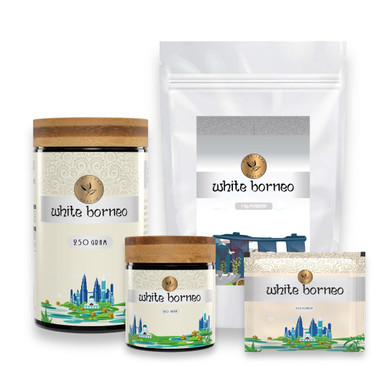
$4.95
Pure Leaf Kratom White Borneo Powder Our sought-after Pure Leaf Kratom White Borneo Powder is making waves for its remarkable qualities that contribute to an...… read more
Kratom Varieties and Their Effects: An Illustrated Guide
Just like most botanicals, kratom is not uniform. It comes in different strains, classified according to the color of the veins on its leaf, with each offering a distinct set of effects to keep in mind when considering it for health or personal use.
Green Vein: Subtypes and Effects
Green vein is the "middle of the road" option bridging the gap between the mellow, pain-relieving red vein and the invigorating white vein. This strain has an intermediate effect profile, providing a blend of sedation, pain relief, and stimulation. It is a balanced option, considered for its ability to provide a moderate energy uplift and mood enhancement without being too overwhelming.
Prominent among green vein subtypes is Green Maeng Da, offering increased focus and alertness. Meanwhile, Green Malay is renowned for its long-lasting effects of enhanced mood and cognitive boosts.
Red Vein: Subtypes and Effects
Red vein is among the most popular strains, renowned for its sedative effects, pain relief properties, and potential to induce relaxation. It may be favored by those seeking to alleviate anxiety or suffering from insomnia. This strain can be helpful in winding down after a long day or grappling with chronic pain.
The Red Bali strain is highly sought after for relief from pain, while Red Borneo can provide a euphoric effect alongside pain relief.
White Vein: Subtypes and Effects
White vein is the go-to strain for people needing an energy kick-start. This strain boasts stimulating and euphoric effects, providing an invigorating mood lift. It can aid focus, motivation, and productivity and may offer relief for people battling with depression or chronic fatigue. Prevalent subtypes are the White Maeng Da, notable for its energizing effects, and the White Thai, for its uplifting mood.
Yellow & Gold Vein: Subtypes and Effects
Considered the rare gems of the kratom world, Yellow and Gold vein strains occupy a unique and somewhat mysterious niche. They're heralded for their ability to induce euphoria and enhance moods, although the euphoric effect is less dramatic than with some other strains, such as certain red veins. Their effects typically fall somewhere between green and white vein strains, offering moderate stimulation, mood lift, and a degree of pain relief.
Yellow Vietnam is revered for enhancing sociability and boosting mood, while Gold Bali offers good relaxation properties.
Kratom and Physical Health: A Review of Reported Benefits and Risks
Kratom, an herbaceous botanical native to Southeast Asia, has been utilized for generations in traditional medicine. Today, people across the globe seek it for diverse effects, which range from pain relief to generating feelings of euphoria. However, it's crucial to understand the potential side effects and risk factors accompanying its usage.
Pain Relief and Sedation: Understanding the Mechanisms
It is renowned for its analgesic or pain-relieving properties. Its two main active ingredients, mitragynine and 7-hydroxymitragynine, interact with the brain's opioid receptors to alleviate pain. Importantly, while these substances act on opioid receptors, they do not function exactly like conventional opioids, producing a somewhat different range of effects.
In addition to pain management, some strains provide sedative effects, which can aid in sleep disorders. They function by calming the nervous system and inducing tranquility, acting as potential naturally occurring sedatives.
Mood Enhancement and Euphoria: Neurochemical Interactions
It is often portrayed as a mood-enhancer. This is because its core compounds interact with the brain's dopamine and serotonin systems. These neurotransmitters play a key role in mood regulation, and their increased activity can induce feelings of well-being and euphoria. However, regular use warrants caution as this can lead to tolerance, dependence, and, in some cases, addiction.
Energy and Stimulation: Dose-Dependent Outcomes
On the other end of the spectrum, certain doses and strains provide a stimulant effect. Its alkaloids stimulate the sympathetic nervous system, commonly manifesting as increased energy, sociability, and alertness. This makes it a possible natural alternative for people seeking to boost productivity or motivation. However, like the sedative effects, the stimulating properties of Kratom are dose-dependent and vary from person to person.
Detoxification: Kratom and Opiate Withdrawal
Interestingly, it has emerged as a potential tool in managing withdrawal symptoms for people struggling with opioid addiction. While more research is definitely required, preliminary findings suggest that Kratom usage may ease the severity of withdrawal symptoms from opioids, offering relief during detoxification. It's crucial to remember, though, that replacing one substance with another carries significant risks, and such usage must be under professional guidance.
Hush Kratom Extract Shot Coffee Infused 10mL
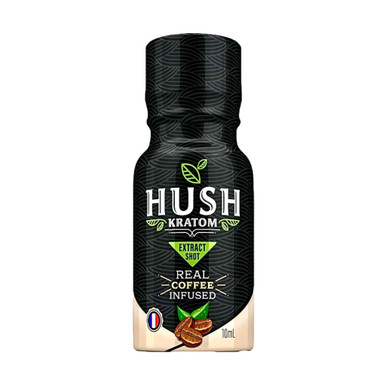
$11.69
Hush Coffee Infused Liquid Kratom Extract Shot 10mL Wake up with the taste of fresh coffee and Kratom in the morning! Our Coffee Infused...… read more
Navigating the Dark Side: Addiction and Withdrawal
Kratom, often used for its stimulating and analgesic properties, also carries a risk of addiction and potential withdrawal symptoms. Diving into the biological and psychological aspects of its addiction potential and the strategies for managing withdrawal symptoms can shed light on these lesser-known aspects of use.
Understanding Kratom's Addiction Potential
Like many substances used for mood enhancement or relief of symptoms, it carries an addiction risk. This risk can be analyzed based on biological and psychological criteria and is supported by personal accounts and case studies.
Biological Criteria for Addiction
The biological potential for addiction to Kratom lies in its active compounds, mitragynine and 7-hydroxymitragynine, which interact with the brain's opioid receptors. Long-term use of substances which act on these receptors can lead to the brain developing tolerance and dependency. Tolerance refers to needing larger doses for the same effect, and dependency is when the body requires the substance for normal functioning.
Psychological Criteria for Addiction
As with other substances, psychological addiction can be a factor. This psychological dependency often emerges from using the substance to cope with stress, anxiety, or other emotions, creating a cycle where the user feels unable to manage emotions without it.
Case Studies and Personal Accounts of Addiction
While scientific research is still emerging, personal accounts from users and clinical case studies highlight the reality of Kratom addiction. These stories often include escalation in dosage, inability to stop using, and experiencing negative impacts on their life due to Kratom use.
Navigating Kratom Withdrawal
The withdrawal can be an uncomfortable process. However, properly recognizing the symptoms, understanding the timeline and phases of withdrawal, and having strategies in place can ease the journey.
Recognizing the Symptoms of Withdrawal
The withdrawal symptoms can range from physical to psychological, including insomnia, muscle aches, irritability, hostility, aggression, and even sadness and anxiety. They can be similar to opioid withdrawal symptoms, though typically less severe, suggesting a correlation between Kratom withdrawal and opioid withdrawal.
Timeline and Phases of Withdrawal
Withdrawal symptoms might appear within 6 to 12 hours after the last dose, peaking around day 2 and lasting approximately a week, although residual symptoms may persist for weeks.
Strategies and Support for Managing Withdrawal
Managing Kratom withdrawal can involve a mix of medication-assisted treatment, behavioral therapy, lifestyle changes, and self-care. It is important to consult a healthcare professional and create a personalized plan to manage withdrawal and maintain a drug-free lifestyle.
With its multiple strains and varied effects, creates a complex landscape of experiences for its users. Understanding how euphoria is achieved and the risks associated with usage forms a crucial part of navigating this landscape.
Deciphering Kratom's Dual Nature: Balancing Euphoria and Risk
Factors Influencing Kratom-Induced Euphoria
It’s strains and dosage are among the foremost factors driving the level of euphoria. For instance, certain strains are known for their mood-lifting potential, such as the Maeng Da and Malay varieties. The dosage also plays a vital role with small doses (1–5 grams) possibly providing a mild stimulant effect, while larger doses (5–15 grams) potentially leading to more opiate-like effects including euphoria.
Perception of Risk Among Kratom Users: A Sociological Perspective
The understanding of risks associated with Kratom varies among users. Often, perceived benefits like pain relief and mood enhancement tend to overcast potential risks. The discussions online in user communities can both highlight the positive effects while sometimes underestimating the adverse side effects and potential for addiction.
Balancing Benefits and Risks: Perspectives from Health Professionals
From a medical standpoint, achieving a balance between the beneficial health effects and potential risks of Kratom use remains a challenging task. While some health professionals acknowledge the potential pain relief and sedative properties, others express concern about the risks of dependency, withdrawal symptoms, and the lack of control over product quality and purity in many markets.
Overall, while Kratom may provide a variety of effects ranging from stimulation to sedation, and euphoria to pain relief, it is crucial to understand the potential risks and to consume responsibly.
Krave Kratom Extract Shot Trainwreck

$7.95
Krave Kratom Extract Shot Trainwreck Step aboard the Kratom train and embark on an extraordinary journey with one of Krave's most popular extracts - the...… read more
Responsible Use: Guidelines for Safe Kratom Consumption
Understanding and Choosing Dosage Ranges
Selecting the right dosage is crucial when considering the consumption of kratom. The range can significantly vary depending on various factors, including strain type, personal tolerance, and intended results. In general, a low dose of kratom is considered to be around 1 to 3 grams, whereas a moderate dose ranges between 4 to 6 grams. High doses, often exceeding 8 grams, may lead to more adverse effects and are not typically recommended for inexperienced users. It is always best to start with a lower dose and gradually increase if necessary.source
Factors Influencing Optimal Dosage: Age, Tolerance, and Purpose
Several factors can influence the optimal dose. Age, existing health conditions, individual body chemistry, and tolerance levels all play a part in determining the right dose. Additionally, the purpose for which it is being used can influence the dosage. When used for pain relief, a higher dose may be warranted. In contrast, lower doses are known to have stimulant effects and could be ideal for an energy boost.
Safety Considerations: Interactions and Contraindications
Interactions with Medications and Substances
As with any substance, kratom has the potential to interact with medications and other substances. For instance, mixing it with opioids, alcohol, or sedatives can potentially increase the risk of harmful outcomes such as severe drowsiness or respiratory distress. Therefore, always consult a healthcare provider about potential interactions before adding it to your routine.
Contraindications and Health Conditions
Some health conditions may contraindicate the use. For instance, individuals with liver disease, heart conditions, or mental health disorders such as anxiety and depression should avoid kratom without proper medical guidance. Kratom, like other substances, may exacerbate symptoms or interfere with treatments and medications associated with these conditions. Always consult a healthcare professional before starting a new supplement or medication.source
Steps to Mitigate Overuse and Dependence
As with any mind-altering substances, it is crucial to fend off misuse and dependency. As an herbal or recreational substance, the risk of overuse and dependence is real. Here are some steps that can help promote responsible use. Begin with the smallest recommended dose and refrain from daily use. Regularly taking breaks can also help prevent building up a tolerance. Finally, listen to your body and stop using if any adverse effects occur.


